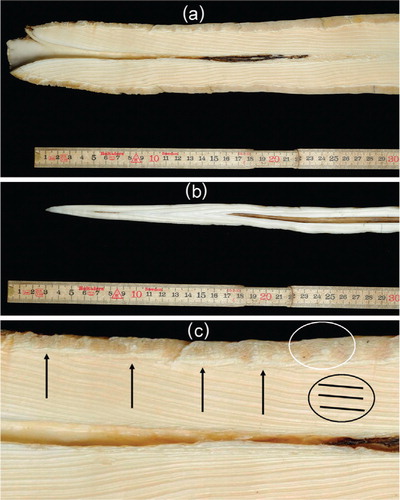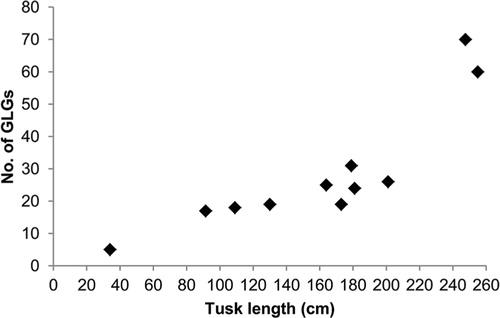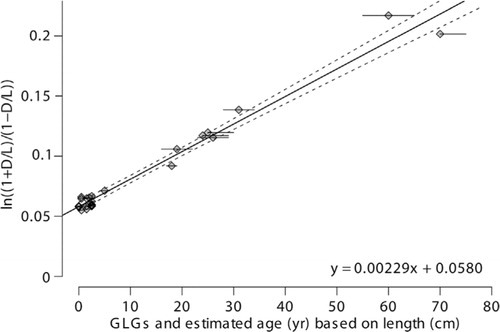Figures & data
Table 1 Data on the 11 narwhals from North Greenland (NGl), West Greenland (WGl) and East Greenland (EGl) used in this study. Note that tusks nos. 4080, 4084 and 953 were received with ca. 5, 6 and 7 cm, respectively, cut off the bases. These missing centimetres are added to the total length of the tusks in the table. Also, it was uncertain whether the neonatal line was present in tusk no. 956 Growth layer group is abbreviated to GLG.
Fig. 1 (a) Root of proximal part of tusk no. 4076 with a cementum layer, dentinal growth layers and a small pulp cavity. (b) Apical tip (distal part) of tusk no. 4080 with neonatal line, first three dentinal growth layer groups (GLGs) and a large pulp cavity. (c) Detail of narwhal tusk no. 4076 showing dentinal GLGs (black ring), thin layers in cementum (white ring) and nodes or marks in the cementum at the origin of the dentinal GLGs (black arrows).


